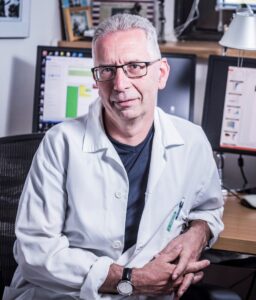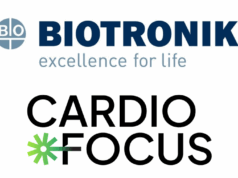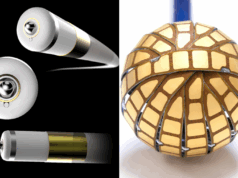This advertorial is sponsored by Boston Scientific

Physicians at Na Homolce Hospital (Prague, Czech Republic) have recently completed their 2,000th clinical case using the FARAPULSE (Boston Scientific) pulsed field ablation (PFA) system. The completion of the procedure marks an important milestone at a centre that has been involved in much of the early research into the PFA technique—which experts hope will represent a new paradigm in the treatment of atrial fibrillation (AF).
Petr Neužil is the head of the cardiology department and director of the cardiac arrhythmia service at Na Homolce Hospital and has been among the early adopters of the FARAPULSE technology. He tells Cardiac Rhythm News that the system offers a number of key benefits including demonstrable safety, efficacy that is comparable with the current standard of care, and better workflow efficiency for physicians.
PFA is unlike other established ablation modalities such as radiofrequency or cryoablation which generate extreme temperatures—either heating or freezing—to ablate targeted heart tissue associated with arrhythmias. Pulsed field systems rely on non-thermal pulses which create a controlled electric field to ablate and scar cardiac tissue through a process called irreversible electroporation (IRE). One of the advantages of this is that it may reduce the potential for collateral damage to the surrounding tissues, such as the oesophagus or phrenic nerve, complications which can be associated with thermal ablation techniques.
“The first advantage of the procedure is safety,” Neužil comments to Cardiac Rhythm News, reflecting that the experience of physicians at Na Homolce Hospital has been that the technology is “very, very safe”.
Neužil’s centre initially began using the FARAPULSE (Boston Scientific) system in 2017 as part of clinical evaluation of the device and have contributed data to the MANIFEST-PF post-market registry which investigated the real-world performance of the system in an unselected patient population. Data from MANIFEST-PF, which were collected at 24 clinical centres throughout Europe, underscore Neužil’s assertion of the systems’ safety, with investigators reporting no oesophageal complications or phrenic nerve injuries persisting past hospital discharge among 1,758 patients treated.
Neužil compares this data to the recently released findings of the ADVENT trial, the 607-patient US randomised controlled trial comparing FARAPULSE PFA to thermal ablation, which were presented at the European Society of Cardiology (ESC) congress (25–28 August, Amsterdam, The Netherlands) and published simultaneously in The New England Journal of Medicine (NEJM). In ADVENT, the primary safety endpoint, a composite of serious procedural-related adverse events occurring within seven days, as well as pulmonary vein stenosis or oesophageal fistula occurring during the 12-month follow up, occurred in 2.1% of patients undergoing the PFA procedure, meeting the trial’s prespecified criteria for non-inferiority. ADVENT investigators also reported superiority of the FARAPULSE device in the study’s secondary safety endpoint—the change in the aggregate pulmonary vein cross-sectional area between baseline and three months—occurring in 0.9% of cases in the PFA arm compared to 12% in the thermal ablation arm.
The trial also met its prespecified criteria for non-inferiority in the primary efficacy endpoint—the success rate of the procedure— defined as acute and chronic success (one-year freedom from recurrent atrial arrhythmias, antiarrhythmic drug use, and cardioversion or repeat ablation), seen in 73.3% of patients in the PFA arm and 71.3% in the thermal ablation group.
“At one year the results were not so different,” says Neužil of the safety and efficacy data from the ADVENT trial when compared against the real-world performance of the device as found in MANIFEST-PF. However, he notes one important difference. “The data did not express real clinical practice, because there were a lot of centres using PFA treatment for their first patients,” something he says is not evident in post-market data from experienced centres in Europe, where the learning curve has already been surpassed.
Another important insight gleaned from the ADVENT trial was that the procedural times were shown to be faster in the PFA arm with a mean of 29.2 minutes for patients who underwent PFA and a mean of 50 minutes for those undergoing thermal ablation. This finding has been borne out in the clinical experience at Na Homolce Hospital, where Neužil says that the caseflow is significantly improved.
“You need to keep in mind that instead of four–to–five patients, I can treat at least 15 patients per day. The workflow is much better,” he says of the speed of performing PFA and the potential this brings to his practice. These benefits can be seen across the gamut of AF patients, with the treatment of paroxysmal AF taking 30 minutes with PFA instead of one hour, and persistent AF patients one hour instead of three or four, Neužil comments. “The waiting list in our institution for persistent AF patients regularly goes up to six or seven months and three months for paroxysmal AF patients, but we are speeding up,” Neužil adds, attributing this in large part to the adoption of PFA.
A faster procedure brings benefits to patients, and Neužil suggests that for many patients PFA is a more “acceptable” procedure. “For some patients we are able to offer same-day discharge,” he explains. “They are not experiencing too much long-term immobilisation and I think they appreciate that there is only the need for deep sedation without anaesthesia and intubation of the patient.”
Offering advice to clinicians who are seeking to incorporate PFA into their practice, Neužil says that they will be “surprised by how effective the procedure is”, but he cautions that they must not instantly expect “miracles”. “When you carry out the procedure properly, you can get much better results, even than those that we have seen in the ADVENT trial,” he hypothesises.









